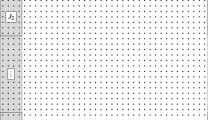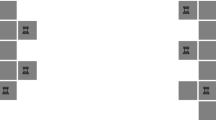Abstract
The simplicial rook graph \({\mathcal {SR}}(m,n)\) is the graph whose vertices are vectors in \( {\mathbb {N}}^m\) such that for each vector the summation of its coordinates is n and two vertices are adjacent if their corresponding vectors differ in exactly two coordinates. Martin and Wagner (Graphs Combin 31:1589–1611, 2015) asked about the independence number of \({\mathcal {SR}}(m,n)\) that is the maximum number of non-attacking rooks which can be placed on a \((m-1)\)-dimensional simplicial chessboard of side length \(n+1\). In this work, we solve this problem and show that \(\alpha ({\mathcal {SR}}(m,n))=\big (1-o(1)\big )\frac{\left( {\begin{array}{c}n+m-1\\ n\end{array}}\right) }{m}\). We also prove that for the domination number of rook graphs we have \(\gamma ({\mathcal {SR}}(m, n))= \varTheta (n^{m-2})\). Moreover we show that these graphs are Hamiltonian. The cyclic simplicial rook graph \({\mathcal {CSR}}(m,n)\) is the graph whose vertices are vectors in \({\mathbb {Z}}^{m}_{n}\) such that for each vector the summation of its coordinates modulo n is 0 and two vertices are adjacent if their corresponding vectors differ in exactly two coordinates. In this work we determine several properties of these graphs such as independence number, chromatic number and automorphism group. Among other results, we also prove that computing the distance between two vertices of a given \({\mathcal {CSR}}(m,n)\) is \( \mathbf {NP}\)-hard in terms of n and m.


Similar content being viewed by others
Notes
A graph G is vertex-transitive if for any two vertices \(v_1\) and \(v_2\) of G there is some automorphism \(f:V(G)\rightarrow V(G)\) such that \(f(v_1)=v_2\).
References
Brouwer, A.E., Cioabă, S.M., Haemers, W.H., Vermette, J.R.: Notes on simplicial rook graphs. J. Algebraic Combin. 43(4), 783–799 (2016)
Garey, M.R., Johnson, D.S.: Computers and Intractability: A Guide to the Theory of \(NP\)-completeness. W. H. Freeman, San Francisco (1979)
Hardy, G.H., Wright, E.M.: An Introduction to the Theory of Numbers, 5th edn. The Clarendon Press, Oxford University Press, New York (1979)
Hoffman, Alan J.: On eigenvalues and colorings of graphs. In: Graph Theory and its Applications (Proc. Advanced Sem., Math. Research Center, Univ. of Wisconsin, Madison, Wis., 1969), pages 79–91. Academic Press, New York (1970)
Martin, J.L., Wagner, J.D.: On the spectra of simplicial rook graphs. Graphs Combin. 31(5), 1589–1611 (2015)
Vermette, J.R.: Spectral and combinatorial properties of friendship graphs, simplicial rook graphs, and extremal expanders. PhD thesis, University of Delaware (2015)
West, D.B.: Introduction to Graph Theory. Prentice Hall Inc, Upper Saddle River (1996)
Acknowledgements
The authors would like to thank the anonymous referees for their useful comments which helped to improve the presentation of this paper.
Author information
Authors and Affiliations
Corresponding author
Additional information
Publisher's Note
Springer Nature remains neutral with regard to jurisdictional claims in published maps and institutional affiliations.
Rights and permissions
About this article
Cite this article
Ahadi, A., Mollahajiaghaei, M. & Dehghan, A. On the Maximum Number of Non-attacking Rooks on a High-Dimensional Simplicial Chessboard. Graphs and Combinatorics 38, 52 (2022). https://doi.org/10.1007/s00373-022-02456-4
Received:
Revised:
Accepted:
Published:
DOI: https://doi.org/10.1007/s00373-022-02456-4




